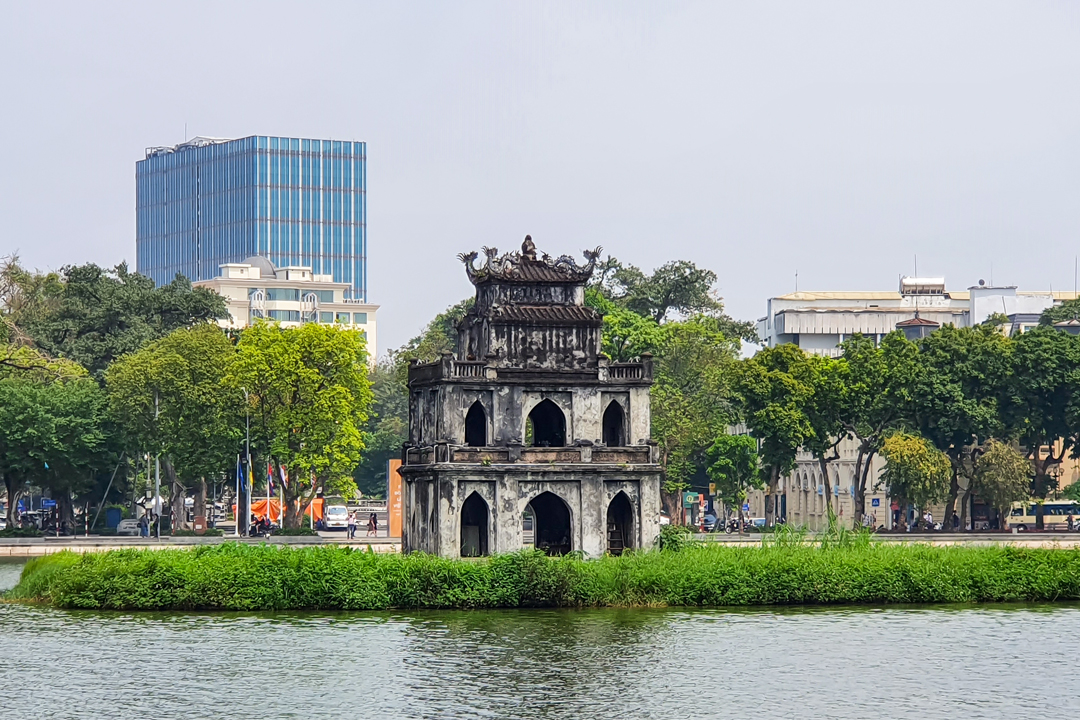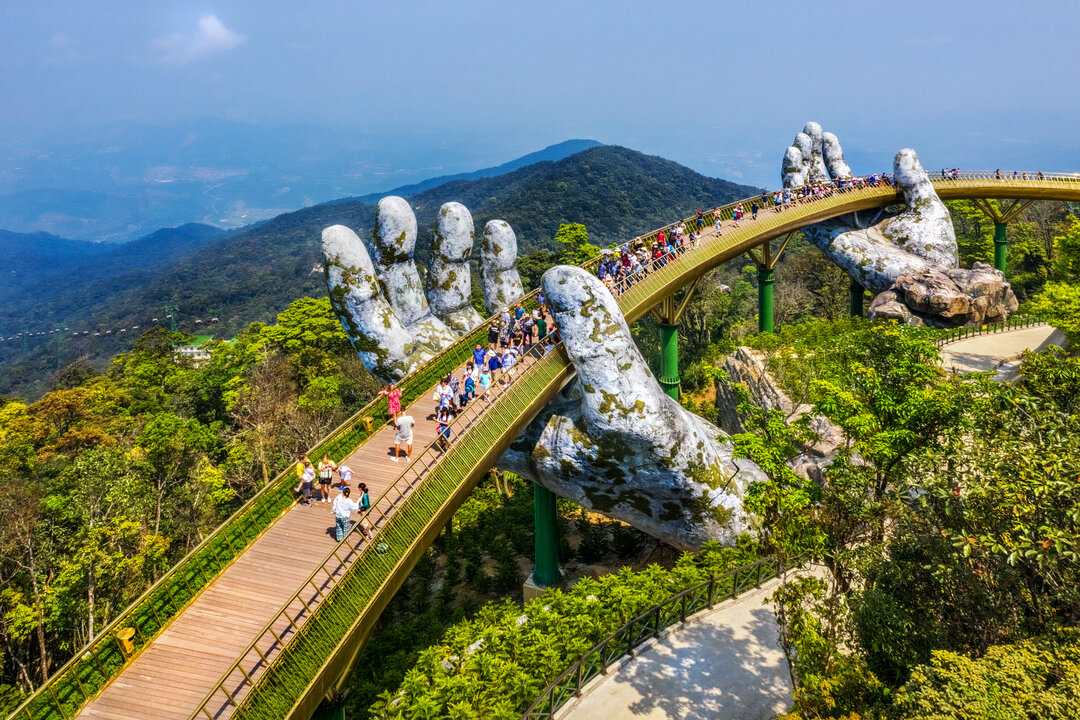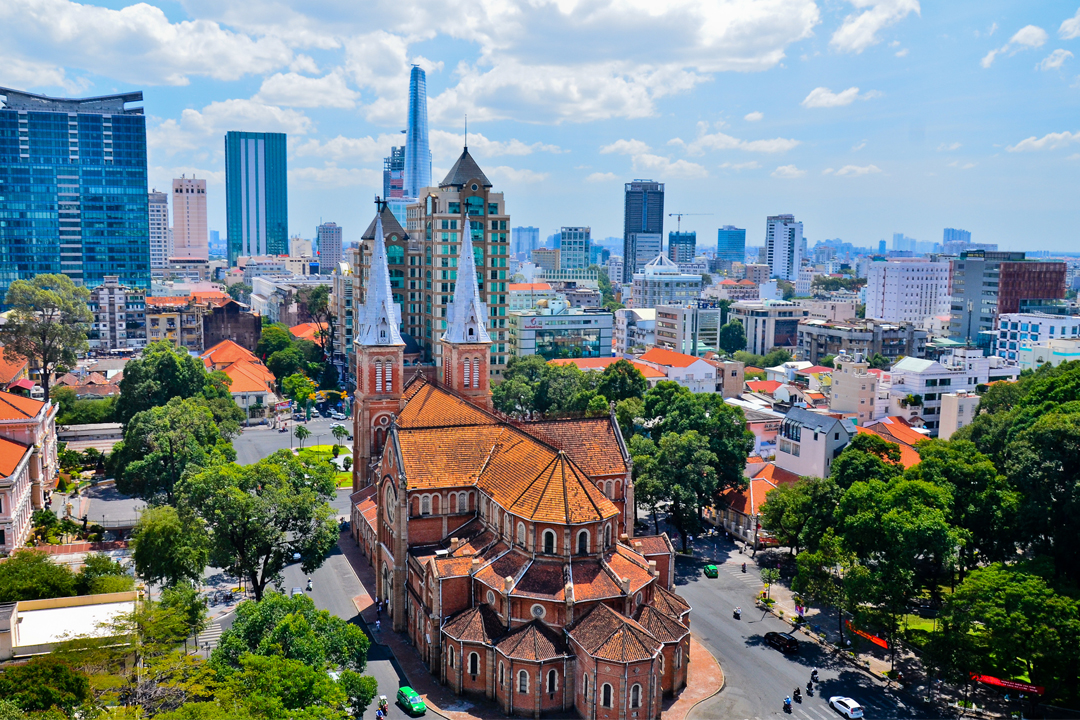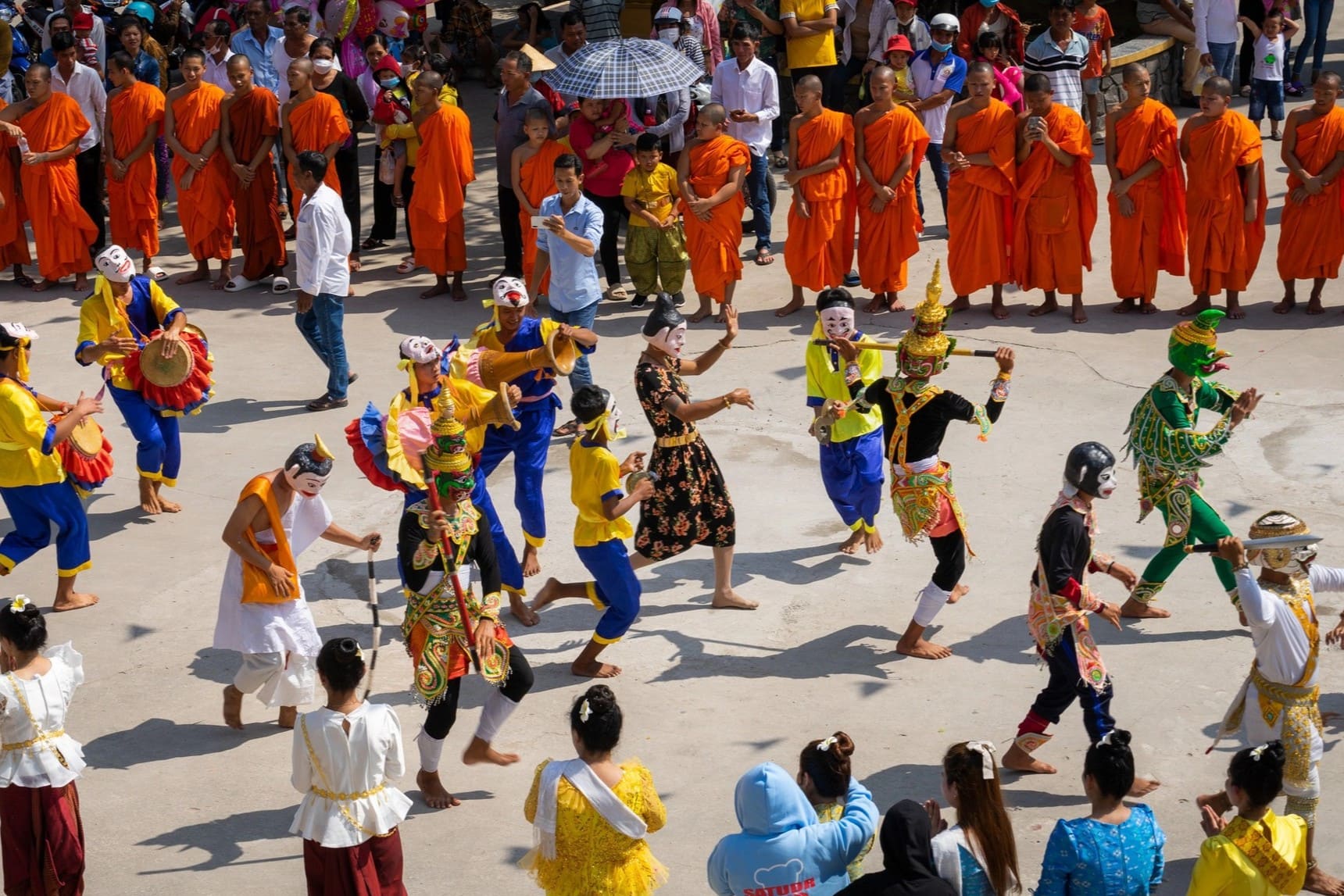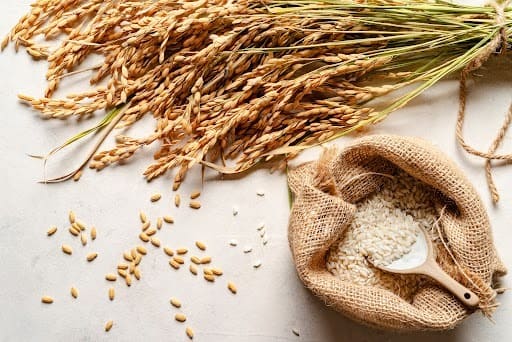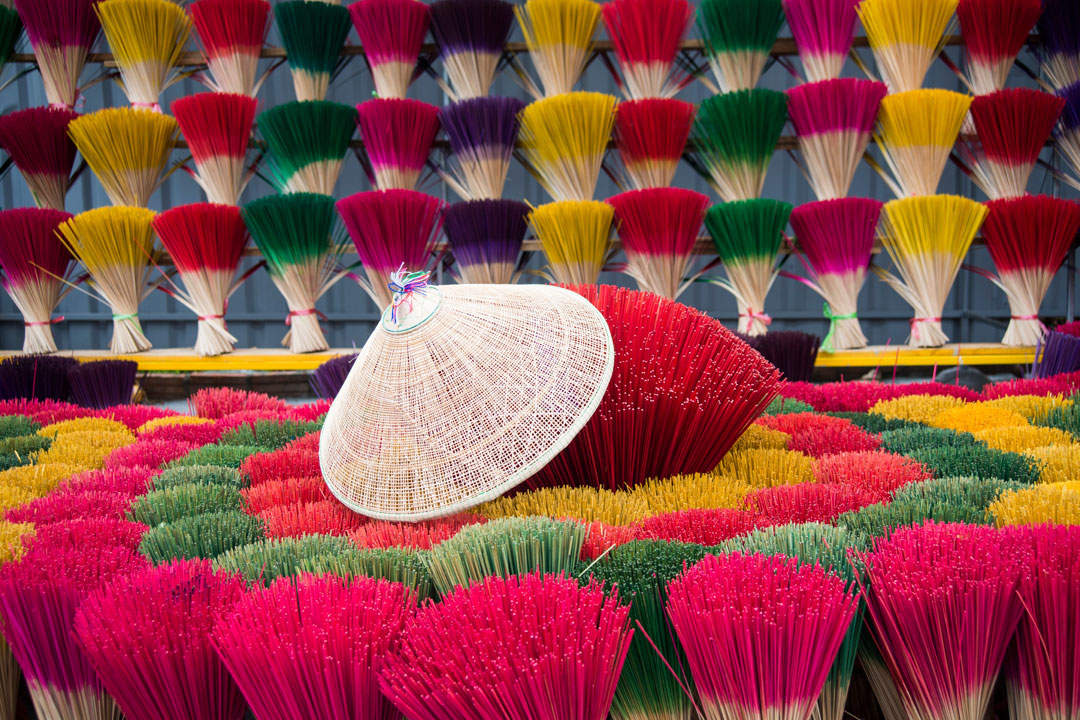Thuy Xuan Incense Stick Village: Incense Process, Things To Do & Travel Guide
Thuy Xuan Incense Village is more than just a place to buy incense, it's a living testament to Hue’s rich heritage, where centuries-old traditions blend with modern craftsmanship. This vibrant village, famous for its handmade incense sticks, offers tourists an immersive experience in Vietnam’s cultural and spiritual practices.
Stepping into the village, you’ll be greeted by rows of colorful incense sticks, fanned out in brilliant shades of red, yellow, and purple. These aren't just for display, each hue carries deep symbolic meaning, reflecting the cultural significance of incense in Vietnam. Thuy Xuan artisans uphold tradition, using natural ingredients like cinnamon, star anise, and pine resin to craft incense for Buddhist rituals, ancestor worship, and local ceremonies.
Beyond the visual spectacle, Thuy Xuan offers a hands-on experience in traditional incense making. Workshops led by local artisans reveal the meticulous process behind each stick, from selecting and grinding aromatic herbs to rolling and drying them under the sun. Tourists can even try their hand at crafting their own incense, gaining a deeper appreciation for this age-old craft.
Easily accessible from Hue's city center, the village is a popular stop for travelers exploring the region’s traditional craft villages. Thuy Xuan promises a meaningful journey with stunning photography spots, shops for authentic souvenirs, and a chance to delve into the spiritual role of incense in Vietnamese culture. This guide of GTrip will explore everything you need to know about Thuy Xuan Incense Village, including how to get there, what to do, and answers to common questions. Dive in and uncover the traditions that make this Hue destination truly unique.
Why is Thuy Xuan incense famous?
Thuy Xuan incense is an iconic part of Hue's rich cultural fabric, renowned for its deep-rooted history and unique craftsmanship. The village's incense-making tradition dates back centuries, passed down through generations, making it an integral part of the local heritage. What truly sets Thuy Xuan incense apart is its deep connection to the spiritual and cultural practices in Vietnam. The village is a place where craftsmanship and spirituality merge, offering you a rare glimpse into the artisanal processes and their cultural significance.
The colors of Thuy Xuan incense are not just vibrant, they represent spiritual meanings that align with local customs. Incense sticks come in various hues, such as red, yellow, and purple, each associated with specific ceremonies, symbolizing prosperity, peace, and purification. These colors aren't chosen merely for their aesthetic value; they carry profound spiritual importance in Vietnamese culture. The rich, natural fragrances of the incense come from an array of traditional Vietnamese herbs like cinnamon, star anise, and sandalwood. This blend of natural ingredients gives each incense stick its distinctive scent, enhancing its role in rituals such as ancestor worship and Buddhist ceremonies.
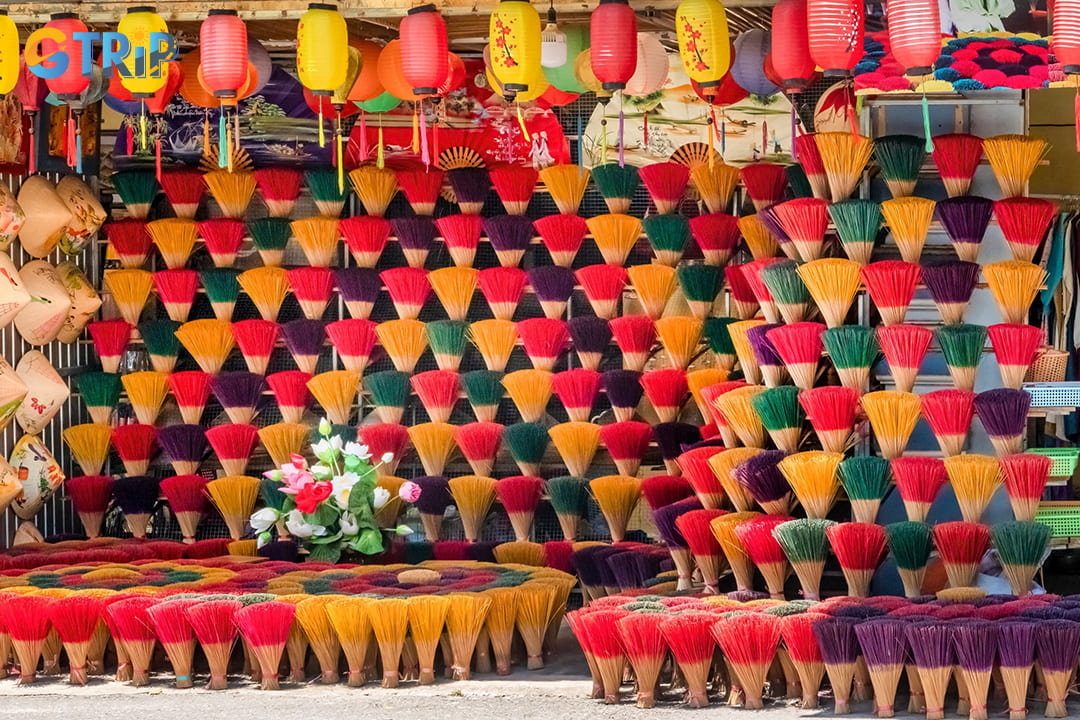
Thuy Xuan incense is an iconic part of Hue's rich cultural fabric, renowned for its deep-rooted history and unique craftsmanship
In addition to these cultural elements, the artisans in Thuy Xuan are adopting eco-friendly practices, creating incense with fewer chemical additives. This shift towards sustainability not only preserves the traditional methods but also reduces the environmental impact. This ensures that incense production remains aligned with the values of natural purity and cultural respect. These efforts highlight the village's ongoing commitment to preserving both its craft and its environment.
Visiting Thuy Xuan Village offers an immersive experience in its cultural heritage, showcasing traditional incense-making passed down for generations. It’s a chance to understand how incense production is more than just a craft; it’s an integral part of local life and spirituality. To explore more of Hue’s fascinating traditions, you can also visit nearby traditional craft villages, where other local artisans continue to uphold Vietnam's age-old skills.
Traditional incense-making process in Thuy Xuan Village
The traditional incense-making process in Thuy Xuan is an integral part of Hue’s rich cultural heritage, showcasing the skill and artistry of local artisans. Tourists to Thuy Xuan Village can immerse themselves in this age-old craft by joining a Thuy Xuan incense-making workshop. These hands-on experiences allow you to create your incense sticks while learning about the intricate process that has been passed down through generations.
The process of making handmade incense in Hue involves several meticulous steps, each contributing to the quality and aroma of the final product. It begins with the careful selection of high-quality ingredients, such as aromatic herbs, spices, and essential oils, which form the basis of the incense’s scent. These ingredients include agarwood powder, cinnamon, pine buds, cardamom, cloves, star anise, eucalyptus, cassia, and others. The herbs are finely ground to release their natural aromas, creating a rich and pleasant scent.
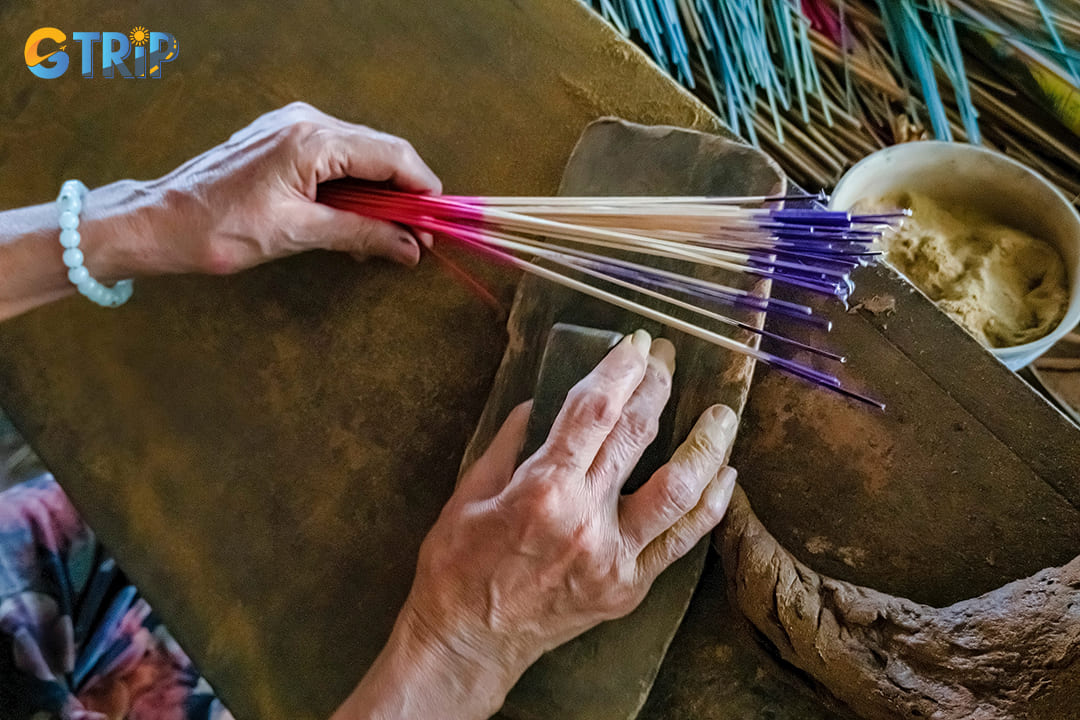
Tourists to Thuy Xuan Village can immerse themselves in this age-old craft by joining a Thuy Xuan Incense Making Workshop
After preparing the herbs, the next step is to roll the incense mixture onto bamboo sticks, ensuring that each stick is evenly coated with the herbal mixture. This process requires precision and patience, as the artisans want to achieve uniformity in both shape and scent. The three places where people often collect ancient bamboo growing in the forest to make incense are in Binh Dien Commune, Phong Son Commune, and Nam Dong District. After rolling, the incense sticks are dried in the sun, allowing them to harden and absorb all the essence of the ingredients.
In addition to its aesthetic value, the production process of Vietnamese incense in Thuy Xuan Village is also deeply tied to the spiritual traditions of the region. Incense is widely used in Buddhist ceremonies, ancestor worship, and other cultural ceremonies, making it a symbol of respect and reverence. The artisans of the village are proud to maintain the integrity of this craft, although mass production would be possible with industrial machines. They want to preserve its cultural significance while incorporating modern, environmentally friendly practices.
By understanding the traditional incense-making process, you will gain a deeper understanding of the core of Hue’s spiritual and cultural life. It is the perfect transition to explore the cultural significance of incense in Vietnam, a topic that will be explored in the next section.
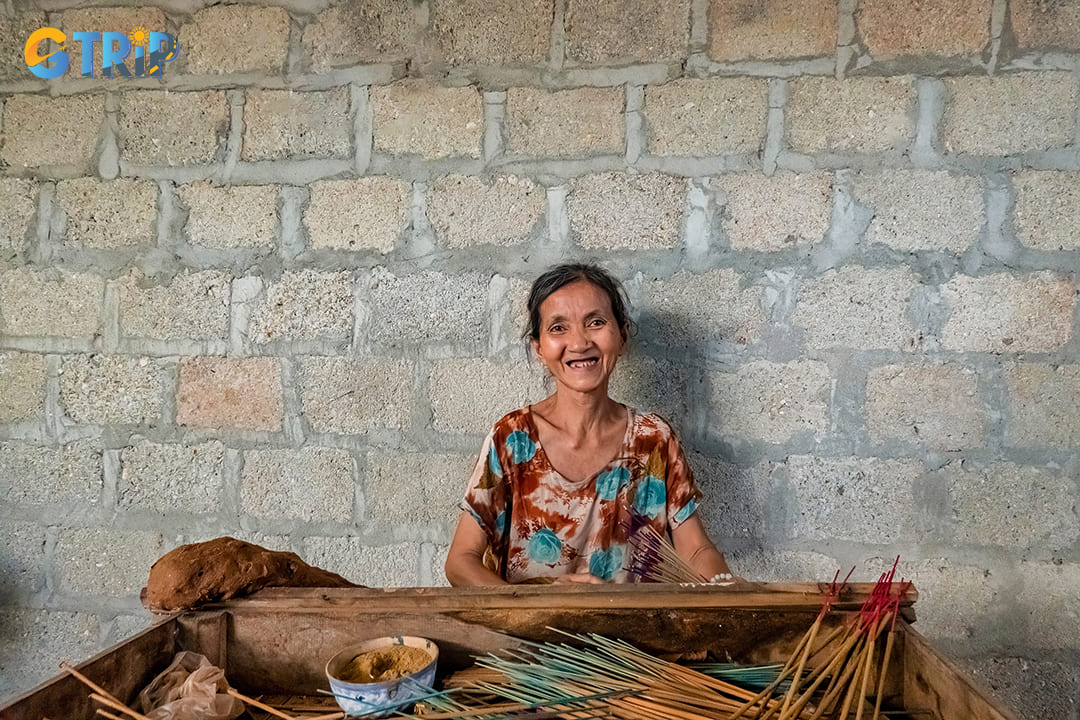
The traditional incense-making process in Thuy Xuan is an integral part of Hue’s rich cultural heritage
The role of incense in Vietnamese culture and rituals
Thuy Xuan incense and Buddhist rituals hold a profound significance in Vietnamese culture. Incense plays an essential role in spiritual practices, particularly within Buddhist temples. The act of lighting incense is considered a way to connect with the divine and the ancestors, as it represents purity, respect, and remembrance. In many Vietnamese households, incense is burned during ancestor worship rituals, offering a means of honoring the deceased and inviting their spirits to join family gatherings. The cultural significance of incense in Vietnam extends beyond its fragrance, as it symbolizes an offering of respect and devotion.
In the serene atmosphere of temples, the smoke from incense sticks rises toward the heavens, embodying prayers and wishes for peace, prosperity, and spiritual growth. The use of incense is especially prominent during Buddhist ceremonies, such as meditation and prayers for enlightenment, where it is believed to purify the surroundings and the mind. The aromatic trails left behind by the incense are thought to facilitate a harmonious environment for reflection and contemplation.
The cultural impact of incense is not limited to religious ceremonies but also extends to daily life, where it serves as a spiritual guide. Many Vietnamese people burn incense in their homes to create an atmosphere of peace, promoting mental clarity and tranquility. During important holidays like the Lunar New Year or casual moments of quiet reflection, incense remains integral to the Vietnamese way of life. As you explore places like the ancient temples of Hue, the deep connection between incense and the region’s cultural heritage becomes even more apparent.
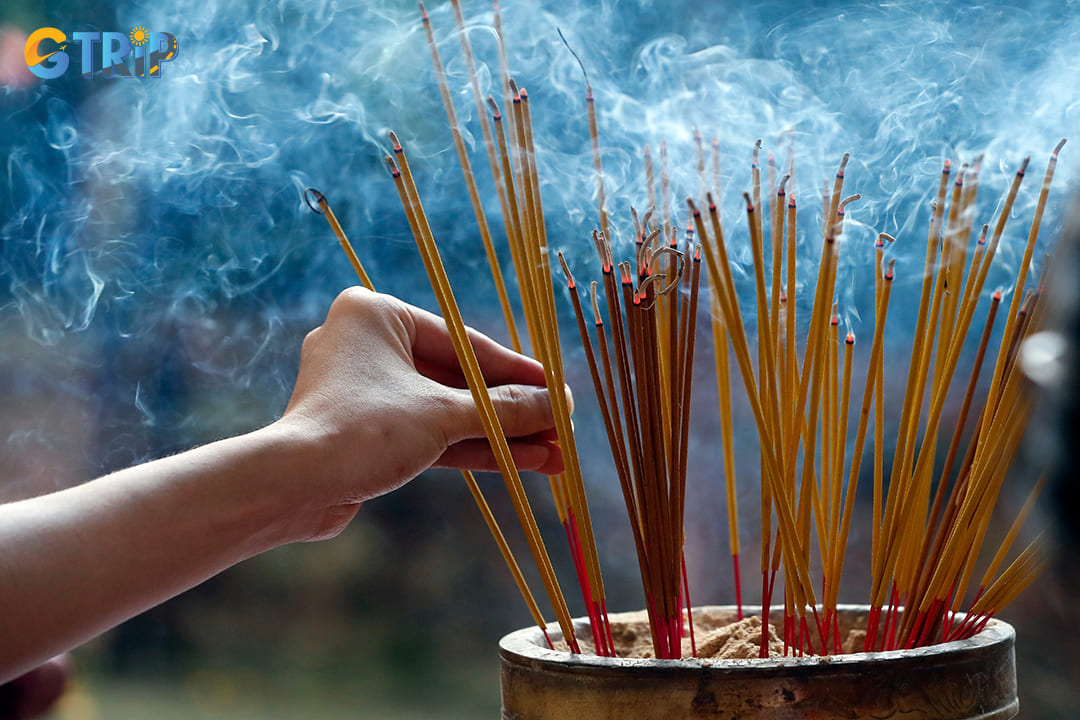
Incense plays an essential role in spiritual practices, particularly within Buddhist temples
4 things to do when visiting Thuy Xuan Incense Village
Here are some activities that you can consider doing when visiting this village.
1. Take photos of the colorful incense displays
Thuy Xuan Incense Stick Village is a paradise for photography enthusiasts. The vibrant and neatly arranged incense sticks, in a spectrum of colors, create a visually striking scene. The colorful displays offer excellent photography spots. The brilliant hues of incense sticks, laid out in intricate patterns, make for breathtaking shots that reflect the village's rich tradition. Thuy Xuan Village photography spots are plentiful, with the best being near the drying racks and workshops where the incense sticks are lined up in rows, ready for use. These areas are ideal for capturing the beauty and artistry of this centuries-old craft. Be sure to bring your camera to snap unique moments and vibrant colors that are symbolic of the village’s culture.
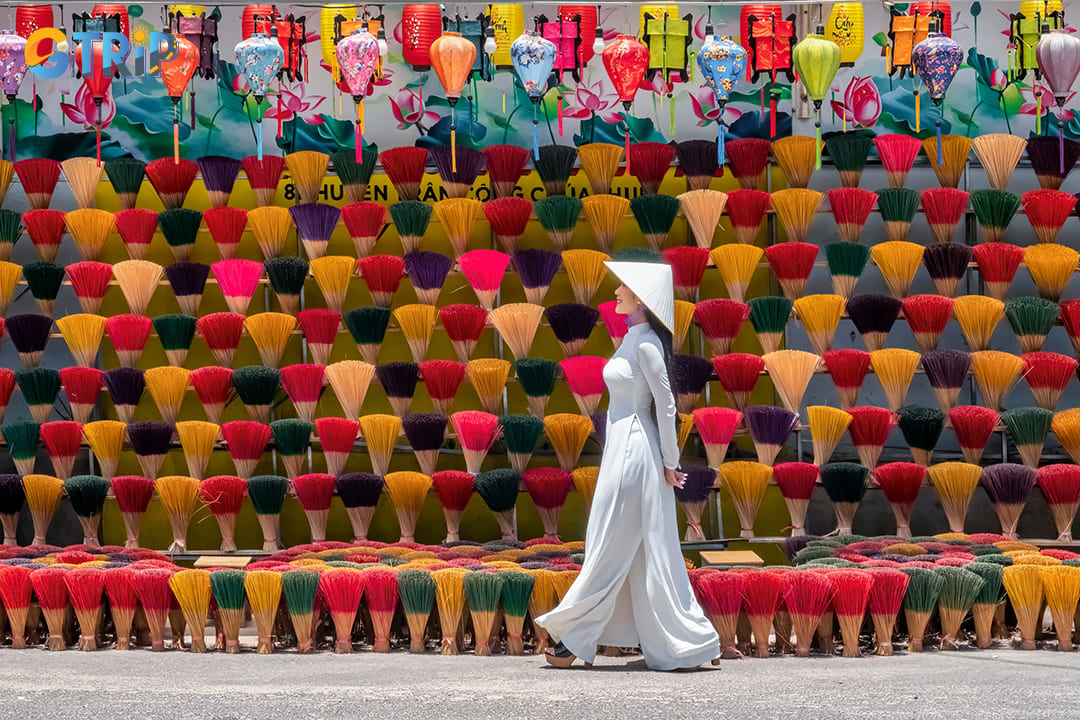
Thuy Xuan Incense Stick Village is a paradise for photography enthusiasts
2. Shop for handmade incense and souvenirs
After enjoying the vibrant displays, you’ll likely want to take home a piece of Thuy Xuan’s craftsmanship. The village is known for its handmade incense and a variety of souvenirs that showcase local heritage. Local artisans offer handmade incense sticks crafted with care, along with herbal products and traditional Vietnamese crafts. You can find beautifully packaged incense that reflects the culture and history of Hue, perfect as a gift or a keepsake. Additionally, artisans sell other traditional items such as woven baskets, pottery, and textiles, allowing you to take home a piece of Vietnamese heritage. If you're looking for a unique souvenir, Thuy Xuan Village is a great place to shop for items that tell the story of Hue's craftsmanship.
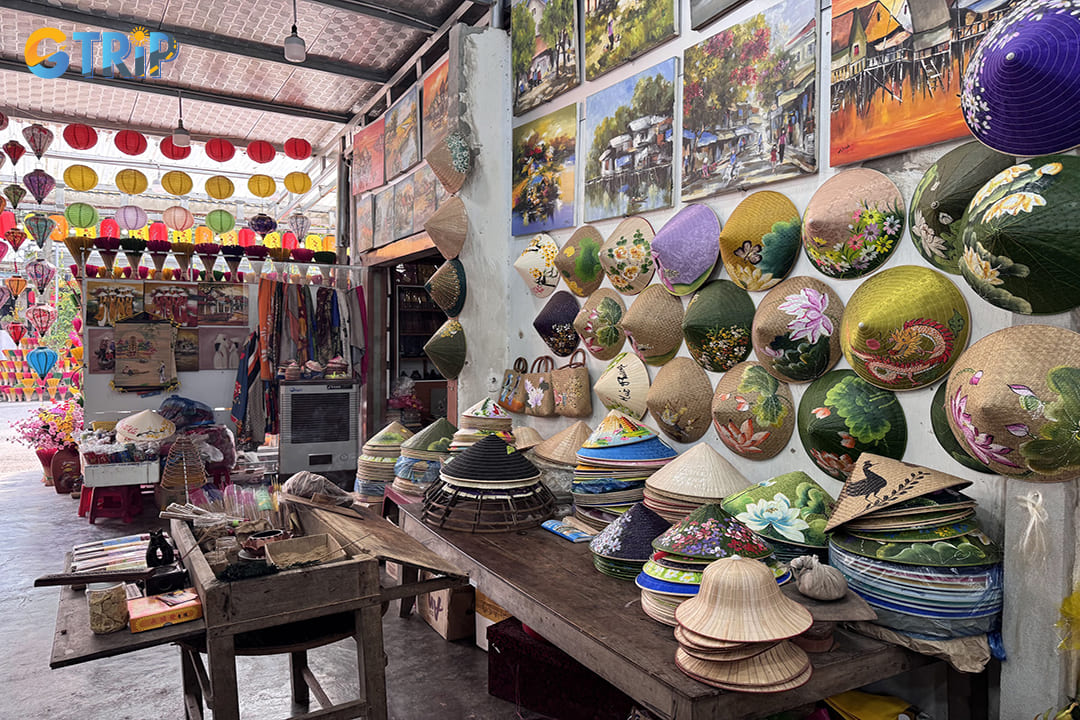
Artisans sell incense sticks and other traditional items
3. Enjoy the peaceful atmosphere and connect with locals
One of the most enriching experiences at Thuy Xuan Incense Stick Village is the opportunity to immerse yourself in the peaceful, serene atmosphere of the village. As you wander through the incense workshops, you’ll be surrounded by the calming aroma of incense and the quiet rhythm of local artisans at work. It’s a perfect place to unwind, away from the bustling city life. You can also engage with the artisans, learning more about their craft and how incense production has been passed down through generations. Connecting with the locals provides a deeper understanding of their way of life, as well as their passion for preserving the tradition of incense making.
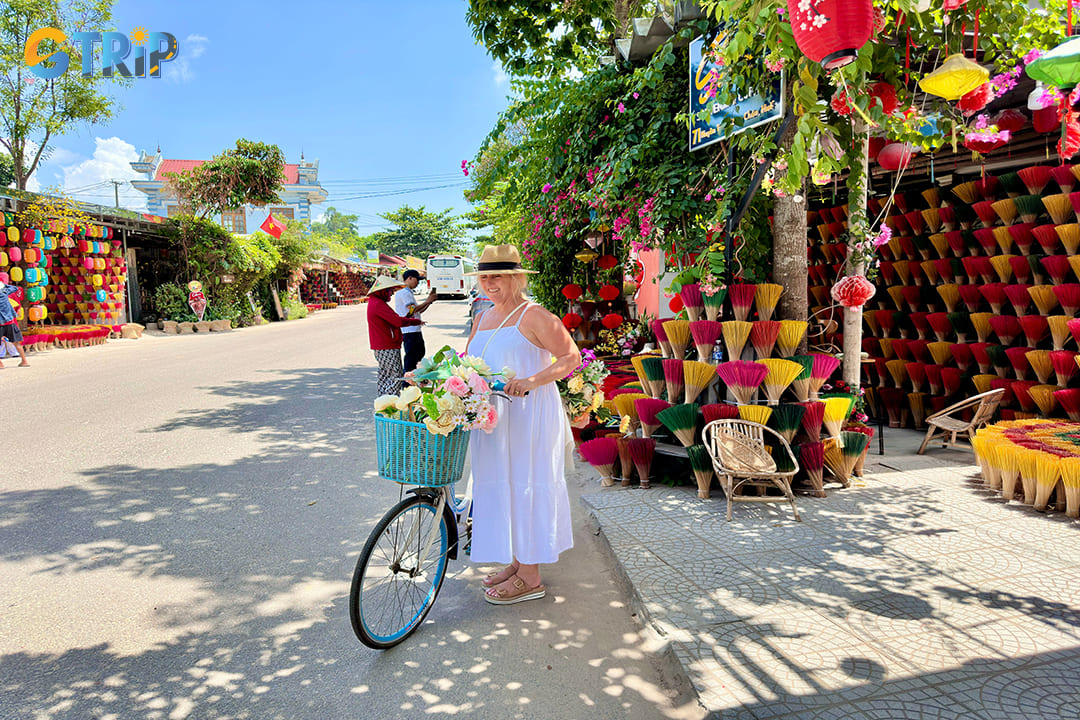
This village is a perfect place to unwind, away from the bustling city life
4. Try making incense yourself
For a hands-on experience, you can participate in an incense-making workshop guided by local artisans. This interactive activity allows you to learn the traditional techniques used to craft incense sticks, from mixing aromatic powders to rolling the incense onto bamboo sticks. You’ll get to choose from various natural ingredients, such as cinnamon, sandalwood, and pine, each offering a distinct fragrance. The process requires focus and care, giving you a deeper appreciation for the craftsmanship involved.
Artisans are happy to share the cultural significance of incense in Vietnamese life, from religious ceremonies to daily rituals. By the end of the workshop, you’ll have your own handmade incense sticks to take home, a unique souvenir that carries the spirit of Thuy Xuan Village. This activity is perfect for both adults and children, providing a memorable way to connect with local traditions while creating something special with your own hands.
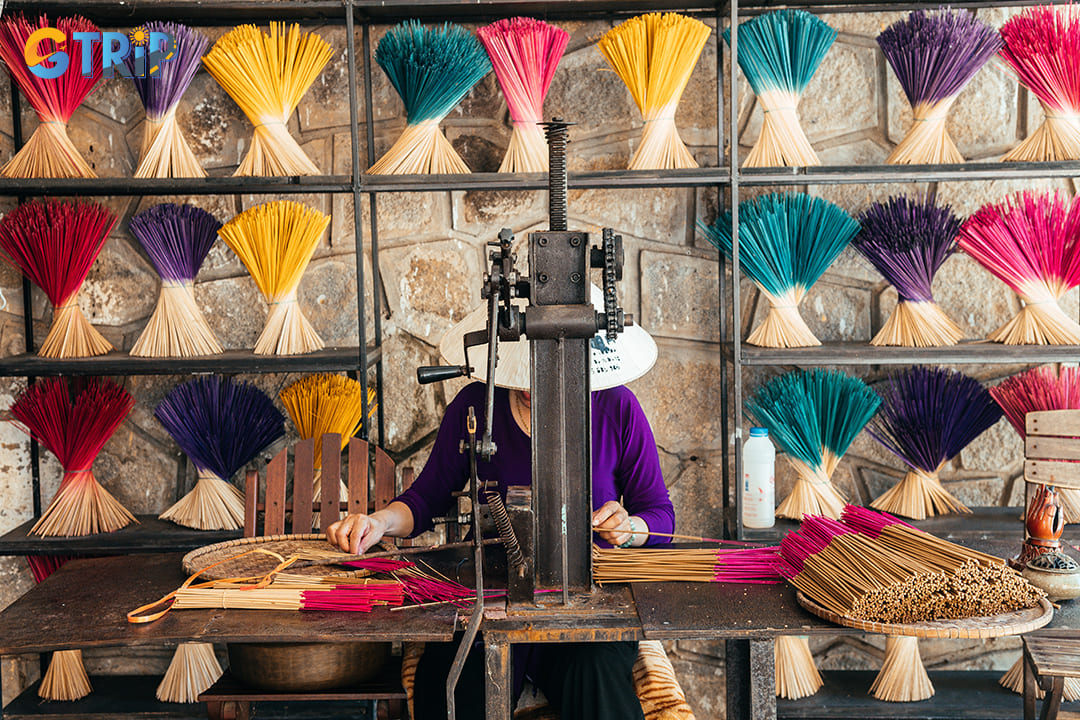
For a hands-on experience, you can participate in an incense-making workshop guided by local artisans
When is the best time to visit Thuy Xuan Incense Village?
The best time to visit Thuy Xuan Incense Stick Village is from March to August, when the weather in Hue is warm, dry, and ideal for outdoor exploration. During this period, the village’s vibrant incense sticks, arranged in fan-like patterns, create a visually striking contrast against the clear blue sky.
From March to May, the climate is pleasantly warm, with moderate temperatures that make strolling through the village comfortable. This is also when local artisans are busy crafting incense sticks, offering tourists the opportunity to witness the traditional production process in full swing. By interacting with the villagers, travelers can gain insight into this centuries-old craft and appreciate the dedication required to preserve this aspect of Vietnamese cultural heritage.
Between June and August, Hue experiences its summer season, characterized by higher temperatures and abundant sunshine. Although the heat can be intense during midday, the mornings and late afternoons are perfect for exploring. People who arrive early can capture stunning photos of the incense sticks illuminated by the soft morning light, while the late afternoon sun enhances the vivid colors of the dyed bamboo sticks. Additionally, this period aligns with the peak tourist season in Hue, making it a great time to combine a visit to Thuy Xuan Village with other Hue tourist attractions.
While March to August is ideal, it’s important to note that Hue’s weather can be unpredictable. Sudden showers are not uncommon, especially in the late afternoon, so packing a light raincoat or umbrella is advisable. Visiting the village during or after a light rain can offer a unique experience as the moisture enhances the aroma of freshly made incense sticks, creating a sensory-rich atmosphere.
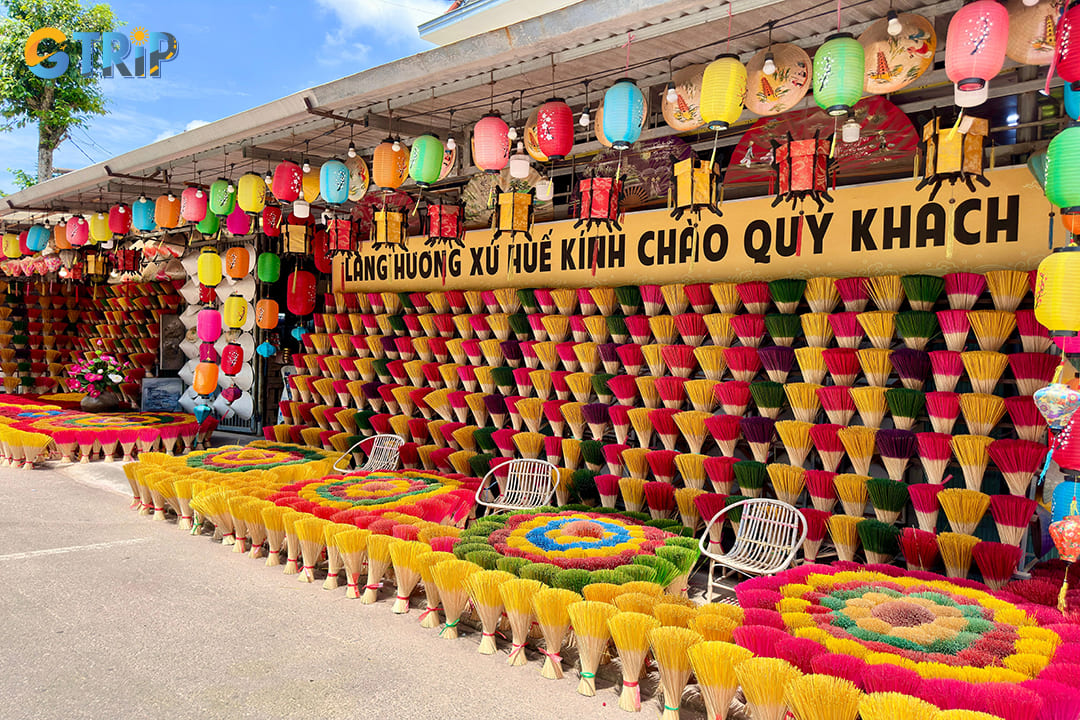
The best time to visit Thuy Xuan Incense Stick Village is from March to August
How to get to Thuy Xuan Incense Village from Hue?
Thuy Xuan Incense Stick Village is located just a short distance from the heart of Hue City, making it easily accessible for everyone looking to explore this traditional craft village. There are several transport options to reach the village, ensuring a comfortable and straightforward journey for all types of travelers.
For those staying in the city center, the most popular way to get to Thuy Xuan Village is by motorbike. The village is a mere 7 kilometers away, which takes around 15 - 20 minutes by motorbike, depending on traffic. It’s a great option if you want to enjoy the scenic views along the way. Alternatively, you can also choose to hire a taxi for a more comfortable and direct route, especially if you're traveling with family or prefer not to drive.
If you’re an adventurous traveler, renting a bicycle is another great way to get to the village. This eco-friendly option offers a chance to experience the local surroundings up close, with the added benefit of promoting sustainability. You’ll pass through traditional streets and lush greenery, immersing yourself in the local ambiance before reaching the village.
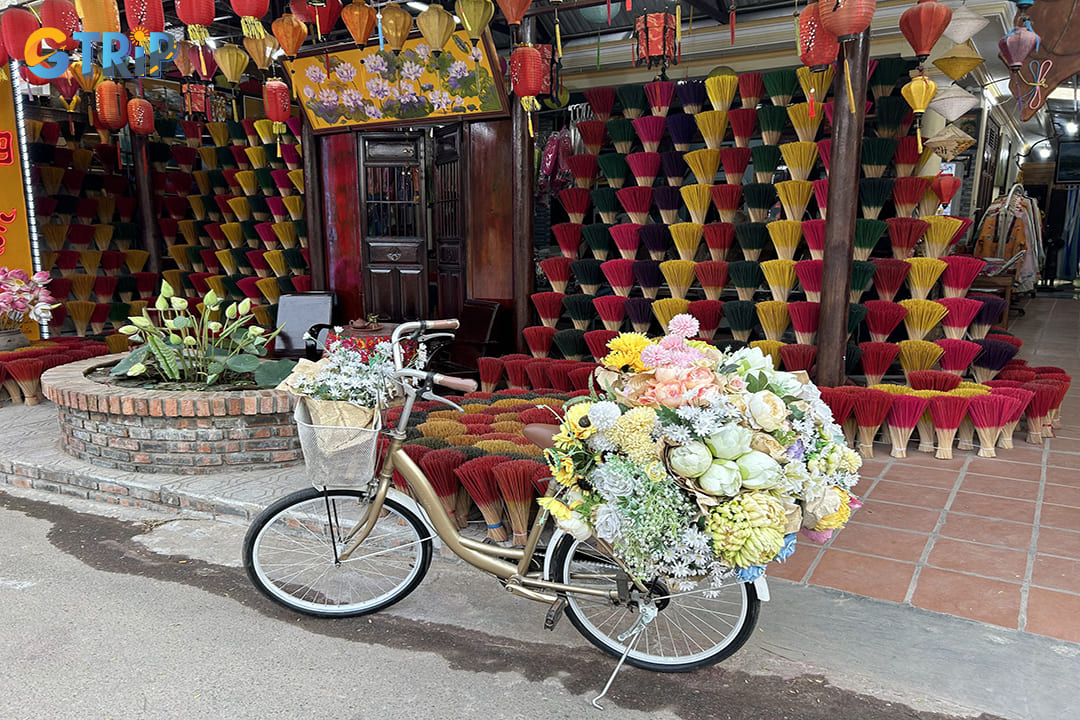
Thuy Xuan Incense Stick Village is easily accessible for everyone looking to explore this traditional craft village
Thuy Xuan Incense Village is open daily to tourists. However, the operating hours might vary slightly depending on the season, so it’s always a good idea to check ahead before planning your visit. Most artisans begin their work early in the morning, and the village usually starts welcoming visitors at 8 AM. If you prefer a quieter experience, visiting in the early hours is ideal.
As for the entrance fee to the village, it is typically free to enter. However, some workshops may charge a small fee for people wishing to participate in incense-making activities. Once you arrive, you can enjoy the beautiful views of incense sticks drying under the sun, and perhaps even try your hand at creating your own incense sticks during a hands-on workshop. Afterward, don’t forget to take a stroll around the village, where you can admire other local handicrafts.
Nearby attractions from Thuy Xuan Incense Stick Village
Hue's tourist attractions are abundant, offering rich cultural experiences beyond Thuy Xuan Incense Stick Village. Hue's diverse sites showcase its imperial heritage and local charm. Below are additional attractions worth exploring:
1. Minh Mang Tomb (7km)
Renowned for its harmonious architecture and serene surroundings, Minh Mang Tomb reflects the grandeur of the Nguyen Dynasty. Situated on the west bank of the Perfume River, the tomb was built between 1840 and 1843 to honor Emperor Minh Mang, known for his contributions to Vietnam's culture, politics, and national unity. The site features intricate stone carvings, tranquil lakes, and lush gardens, making it a must-visit for history enthusiasts.
The architectural layout follows strict feng shui principles, with structures aligned symmetrically along a central axis. Highlights include the majestic Dai Hong Mon gate, the main courtyard lined with stone statues of mandarins, and the serene Minh Lau Pavilion, offering panoramic views of the surrounding hills and river. You can stroll along winding pathways shaded by ancient trees, immersing yourself in the peaceful atmosphere that symbolizes the emperor’s vision of harmony between humans and nature. The tomb is part of the Hue cultural sites recognized as a UNESCO World Heritage Site, preserving the legacy of Vietnam's last imperial dynasty.
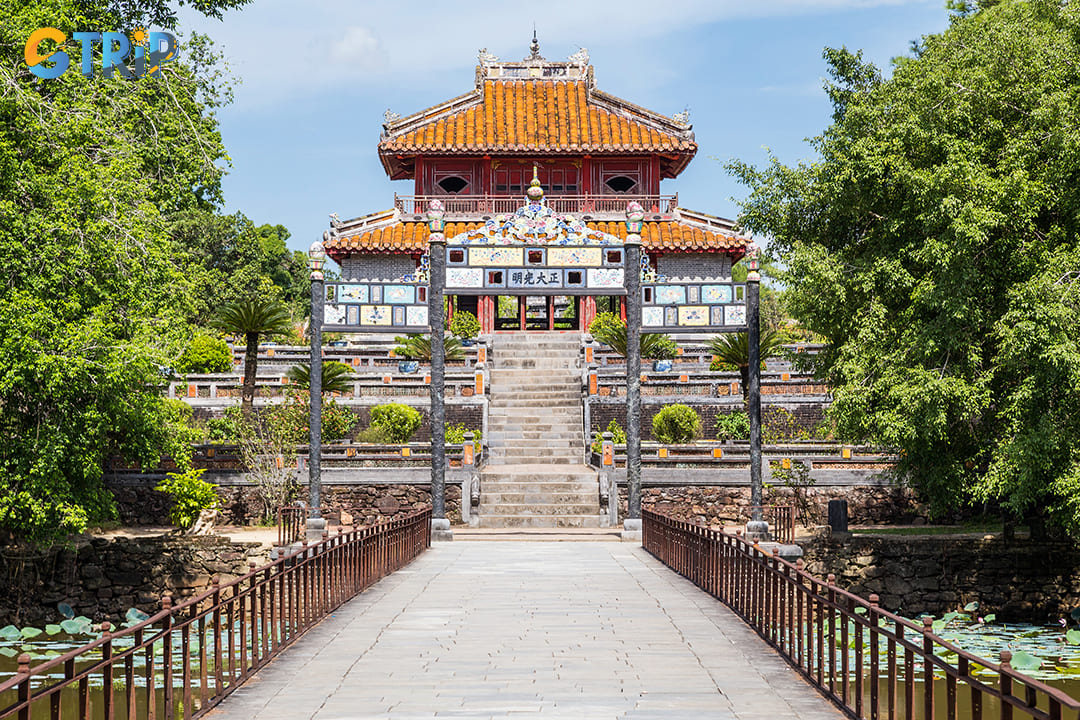
Minh Mang Tomb reflects the grandeur of the Nguyen Dynasty
2. Dong Ba Market (7.3km)
For a taste of local life, head to Dong Ba Market, Hue’s largest and most vibrant marketplace. Located near the Perfume River, this bustling market has been a trading hub since the late 19th century. You can explore countless stalls selling fresh produce, handcrafted souvenirs, and traditional Vietnamese dishes. The market is renowned for its local delicacies, including bun bo Hue (spicy beef noodle soup), banh khoai (crispy pancakes), and fresh spring rolls. Bargaining is part of the experience, so don’t hesitate to negotiate prices while interacting with friendly vendors. With its lively atmosphere and diverse offerings, Dong Ba Market provides an authentic glimpse into daily life in Hue.
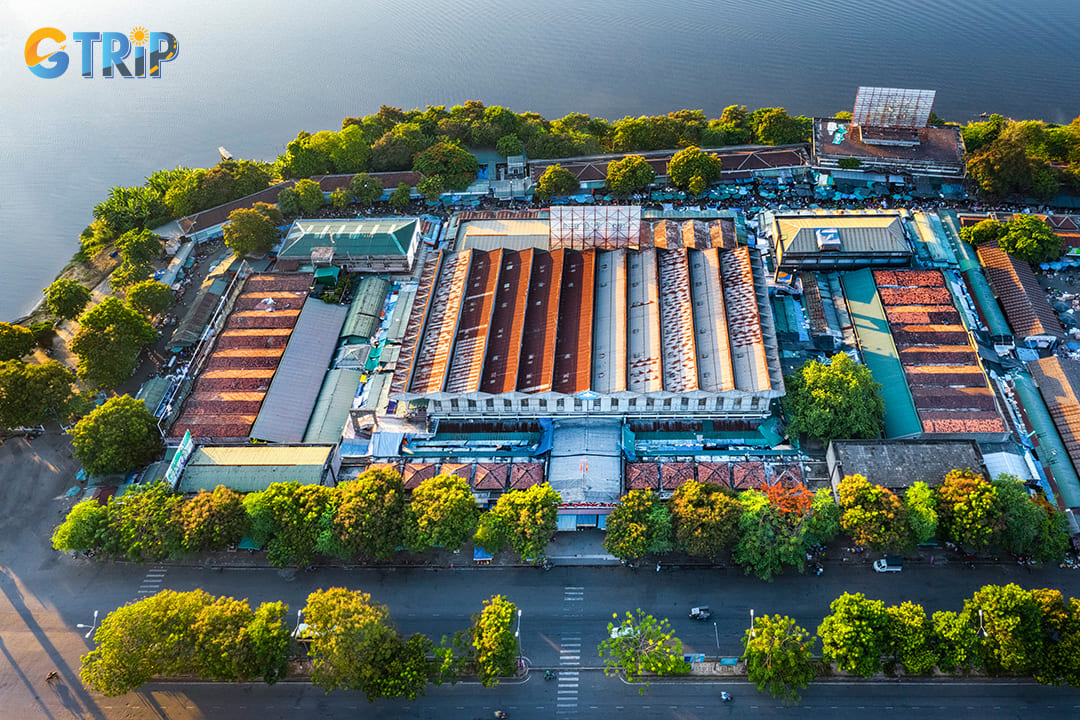
Dong Ba Market is Hue’s largest and most vibrant marketplace
3. Hue Museum of Royal Antiquities (7km)
Located near the Imperial Citadel of Hue, the Hue Museum of Royal Antiquities houses a vast collection of artifacts from the Nguyen Dynasty. Established in 1923, it is one of Vietnam's oldest museums, offering a comprehensive glimpse into the lifestyle and culture of the royal family. The museum’s exhibits include royal costumes adorned with intricate embroidery, finely crafted ceramics, and ceremonial weapons that showcase the craftsmanship of the time.
One of the highlights is the collection of imperial seals and golden crowns, symbolizing the power and authority of the Nguyen emperors. The museum also features ornate furniture, lacquered wooden screens, and bronze incense burners that once decorated the palaces within the Forbidden Purple City. Each artifact is carefully preserved, allowing you to appreciate the artistic and historical significance of Vietnam’s last monarchy. The museum's location within the former Long An Palace adds to its historical ambiance, with traditional Vietnamese architecture and intricate wood carvings.
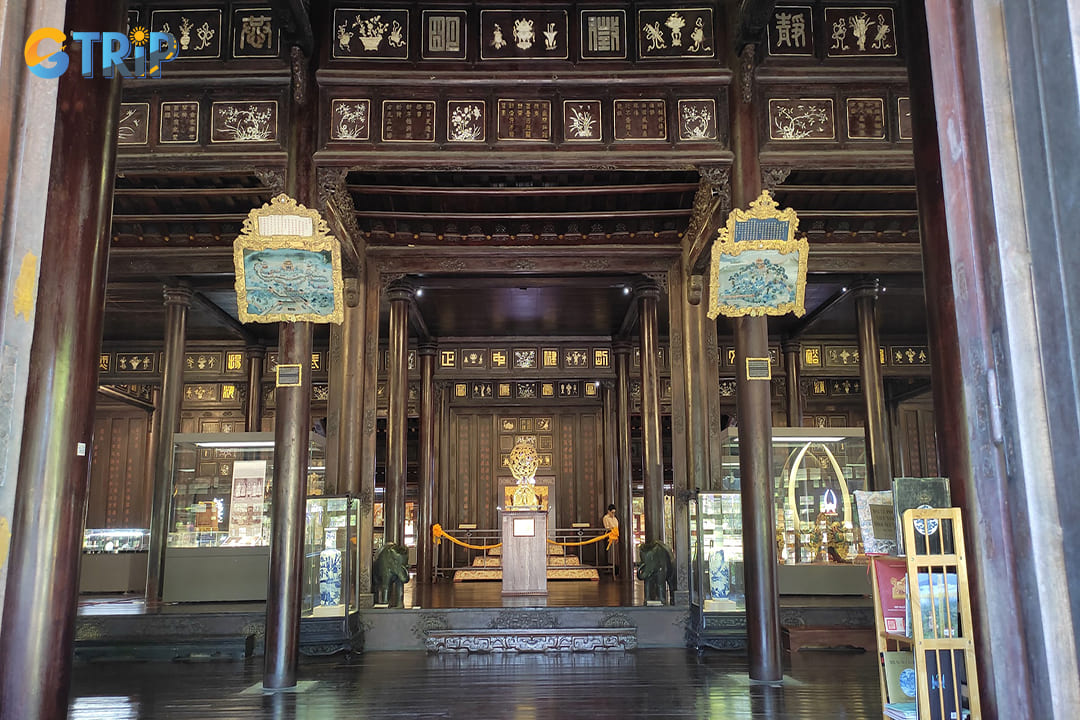
The Hue Museum of Royal Antiquities houses a vast collection of artifacts from the Nguyen Dynasty
4. An Dinh Palace (5.8km)
Built in the early 20th century, An Dinh Palace stands as a testament to the blending of traditional Vietnamese design with European influences. Originally constructed by Emperor Khai Dinh and later used as the residence of Emperor Bao Dai, the palace reflects the transitional period when Western architecture began to influence Vietnamese royal constructions.
The palace’s exterior is adorned with intricate reliefs and colorful mosaic tiles, while the interiors feature frescoed ceilings, gilded decorations, and grand chandeliers imported from Europe. The main hall, Khai Tuong Pavilion, is particularly notable for its elaborate paintings depicting scenes from Vietnamese mythology and royal life. Each room is decorated with furniture crafted from rare woods, embellished with mother-of-pearl inlays and gold leaf.
Tourists can explore the private quarters of the royal family, gaining insight into their daily lives and personal tastes. The palace also houses exhibits showcasing photographs and memorabilia from the reign of Emperor Bao Dai, offering a glimpse into the final chapter of Vietnam’s imperial history. Surrounded by landscaped gardens and reflecting pools, An Dinh Palace provides a tranquil setting that contrasts with the grandeur of the Hue Imperial City.
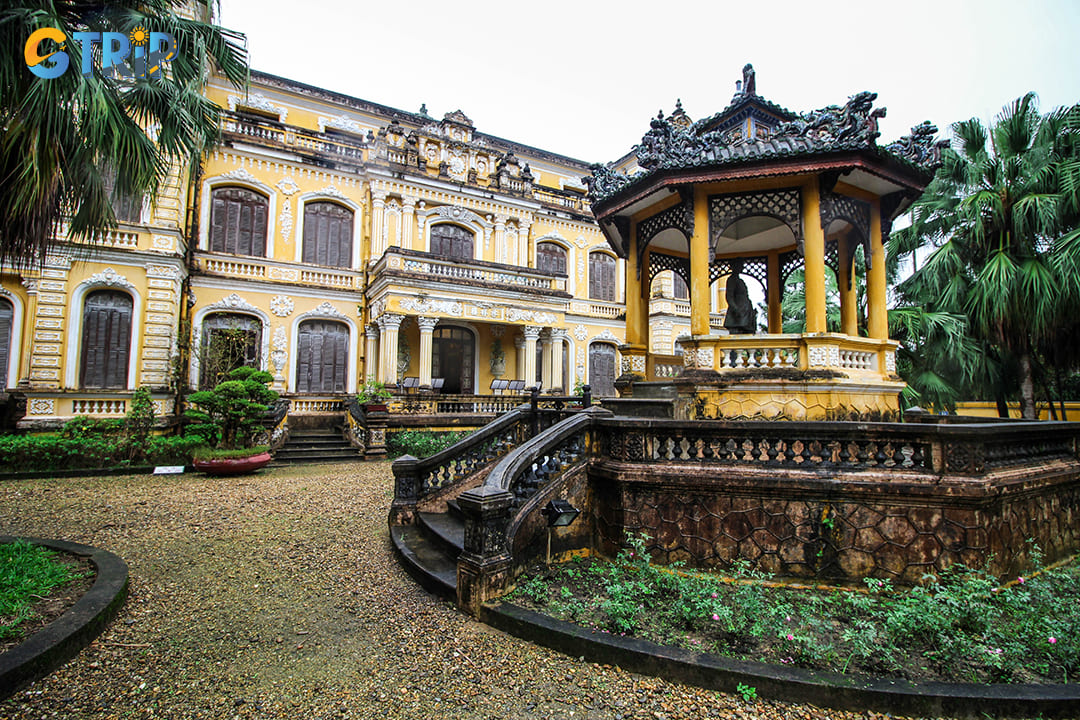
An Dinh Palace stands as a testament to the blending of traditional Vietnamese design with European influences
Frequently Asked Questions
1. How long does it take to explore the village?
The time you spend at Thuy Xuan Village depends on your interests. If you're just exploring the area, taking photos of the vibrant incense displays, and browsing the local artisan shops, a visit can take around 1 to 2 hours. However, if you choose to participate in a hands-on incense-making workshop or take a deeper dive into the history and culture of the village, it could take around 3 to 4 hours.
2. Can I buy incense sticks directly from the artisans?
Yes, you can purchase handmade incense sticks directly from the artisans in Thuy Xuan Village. These artisan-made incense sticks are unique and often made from natural ingredients like herbs, flowers, and oils, which contribute to their distinct fragrance. In addition to incense, you’ll find other traditional Vietnamese crafts, such as herbal products and souvenirs that represent the cultural heritage of the region.
3. Can I take a guided tour at Thuy Xuan Village?
Guided tours are available at Thuy Xuan Village and can provide a deeper understanding of the village's history, culture, and the incense-making process. Local guides are knowledgeable about the traditional incense-making techniques and can offer fascinating insights into the significance of incense in Vietnamese culture. A guided tour can enhance your experience by providing context to what you see and learn in the village. You can arrange a guided tour directly through local travel agencies or at the village itself.
4. Is Thuy Xuan Village accessible for people with disabilities?
Thuy Xuan Village is relatively accessible for people with disabilities, though it is important to note that some areas may have uneven terrain. If you or a member of your group has mobility challenges, it may be a good idea to contact the village or a local travel agency in advance to discuss accessibility needs. Many local tours can accommodate wheelchairs or provide assistance for tourists with special requirements.
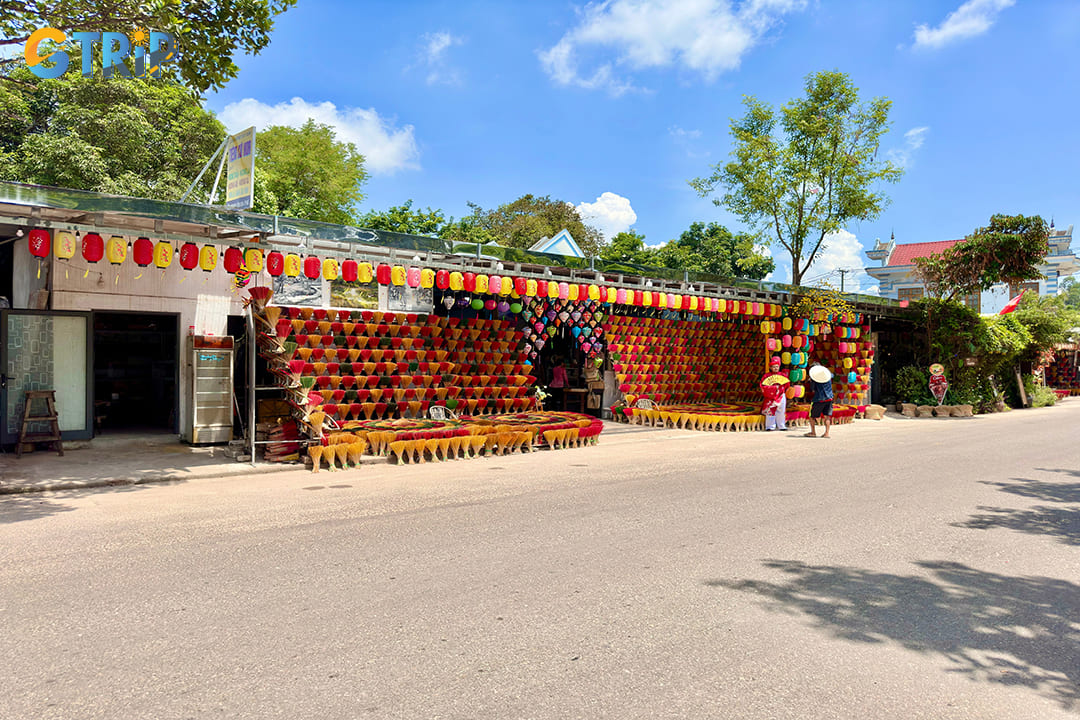
The time you spend at Thuy Xuan Village depends on your interests
Thuy Xuan Incense Stick Village offers a fascinating glimpse into the traditional craftsmanship of Hue. It showcases the meticulous incense-making process and its deep cultural significance. As tourists explore this village, they can immerse themselves in the local heritage, from witnessing artisans handcraft incense sticks to learning about the spiritual role incense plays in Vietnam. If you want to explore more of Vietnam’s cultural heritage, be sure to experience other traditional crafts. You can also join a serene Hue tour for a deeper dive into the country’s vibrant traditions. GTrip - Vietnam Travel Agency is here to guide you every step of the way.

